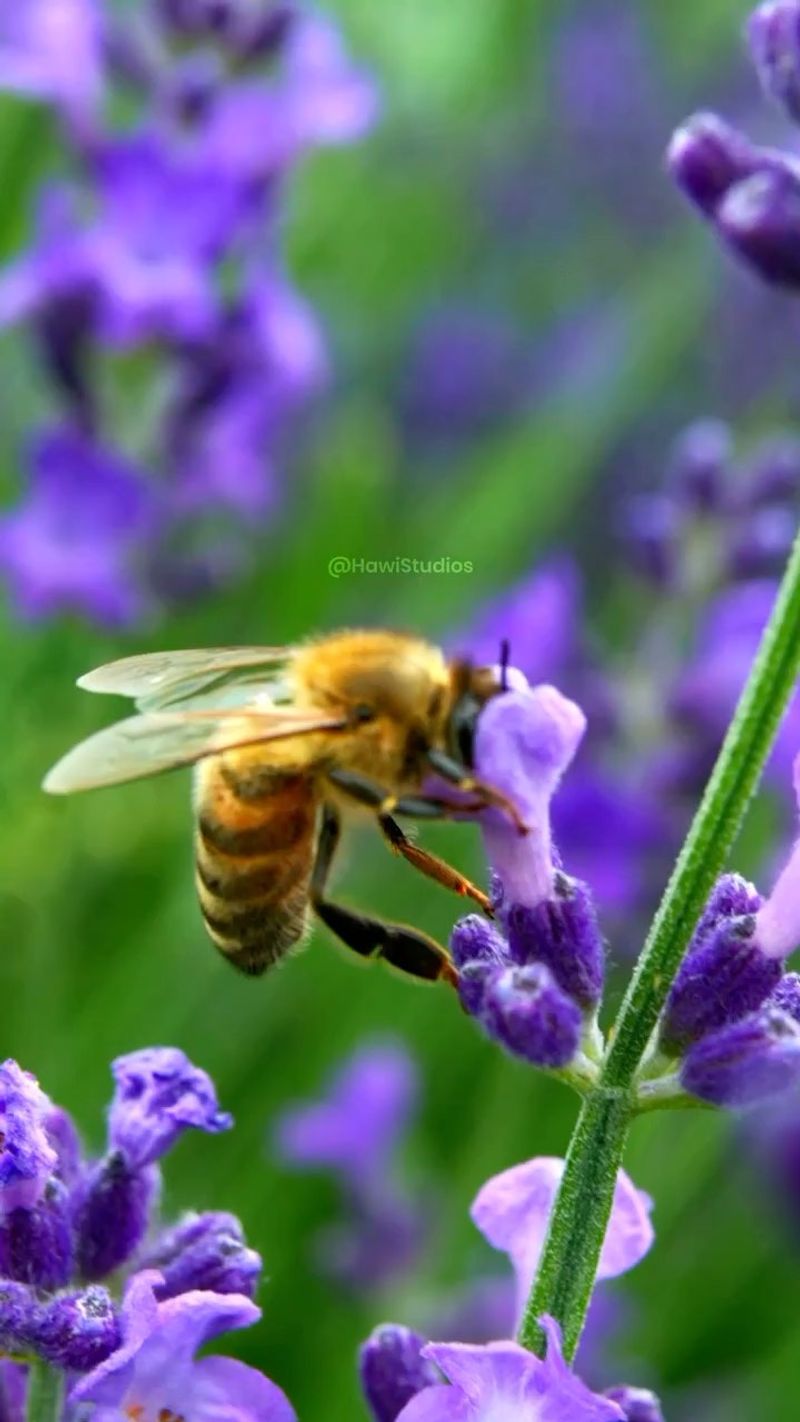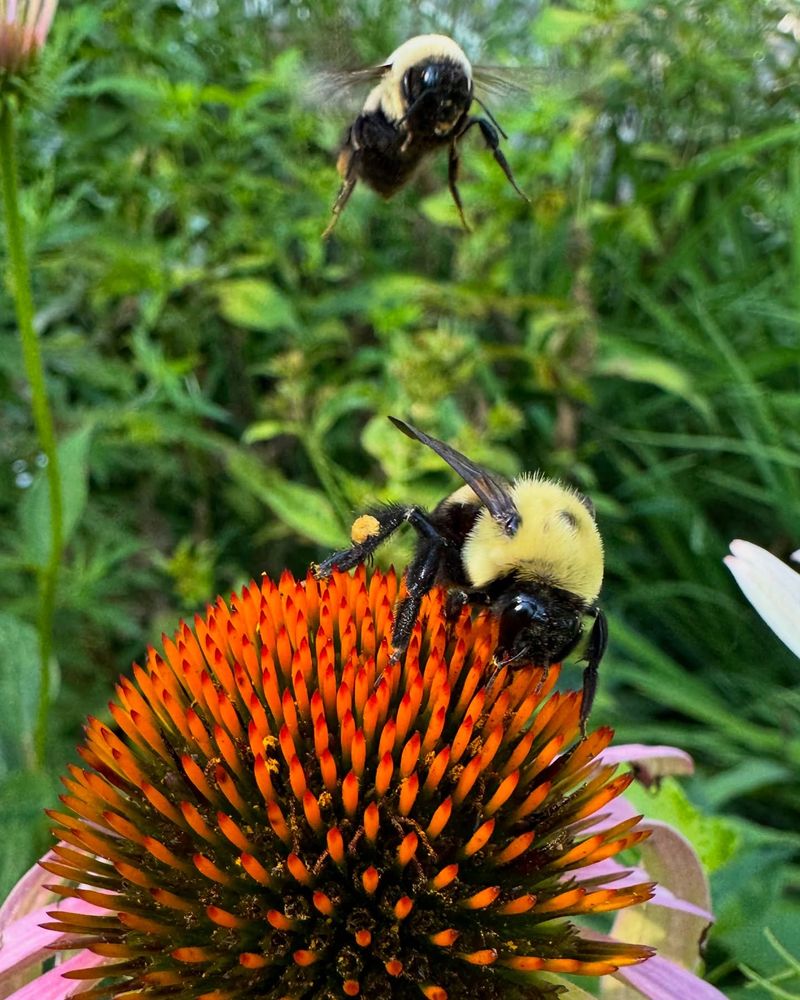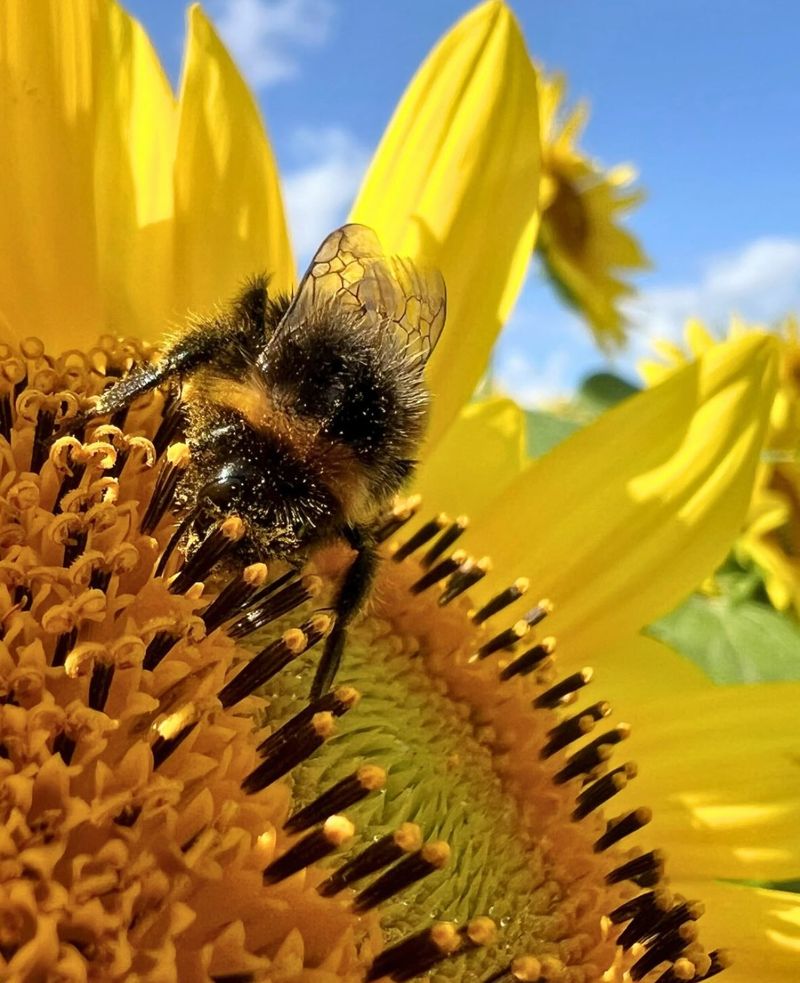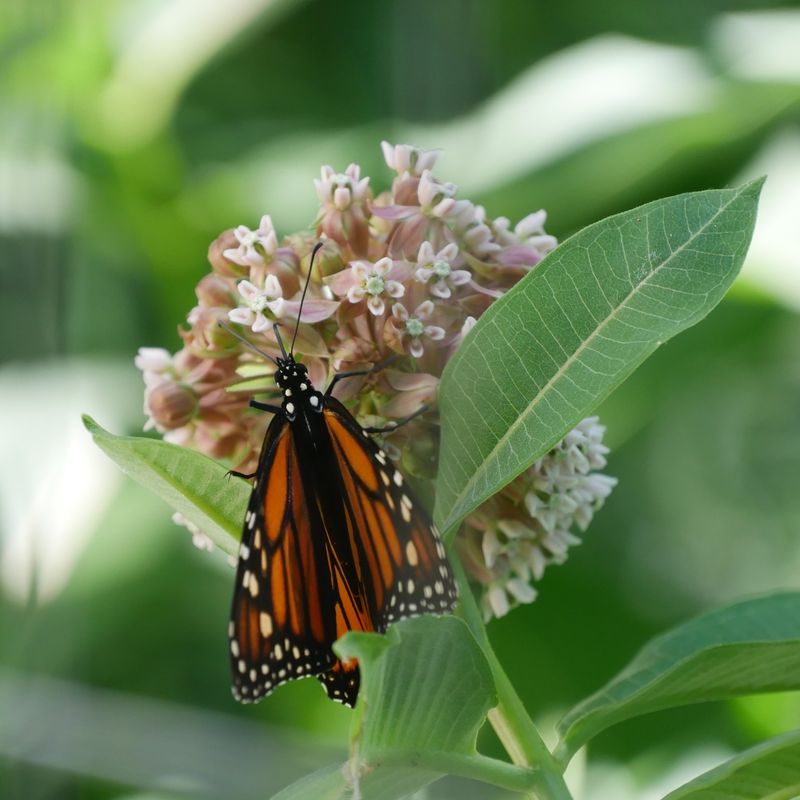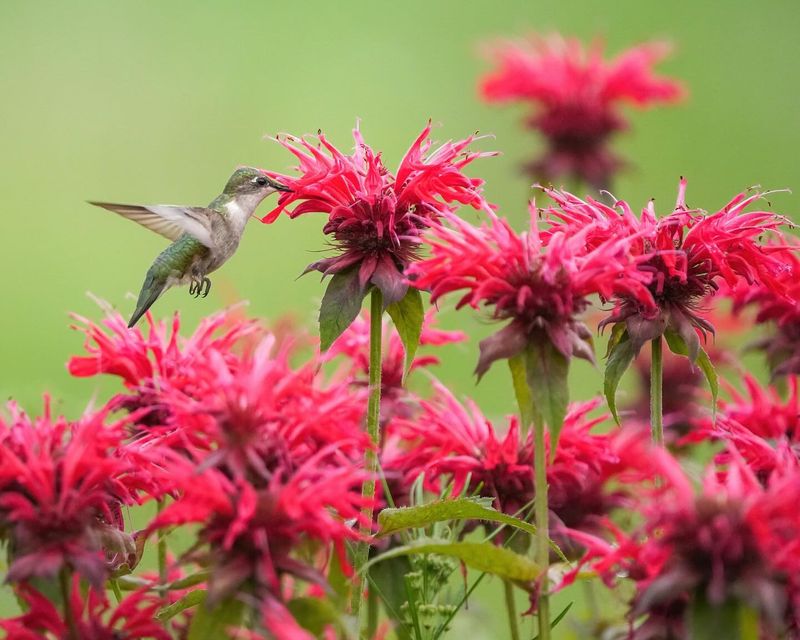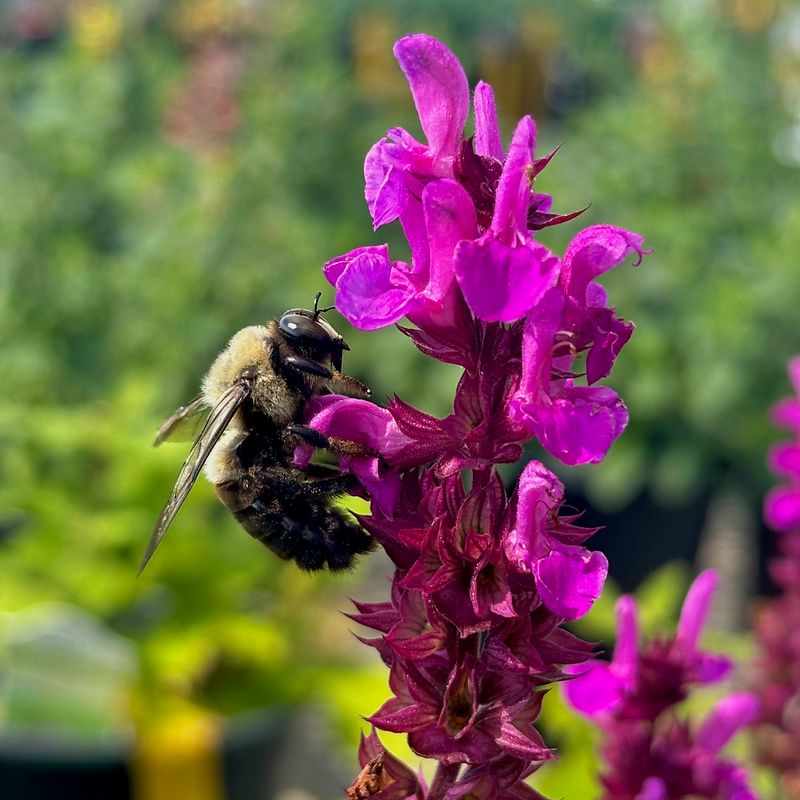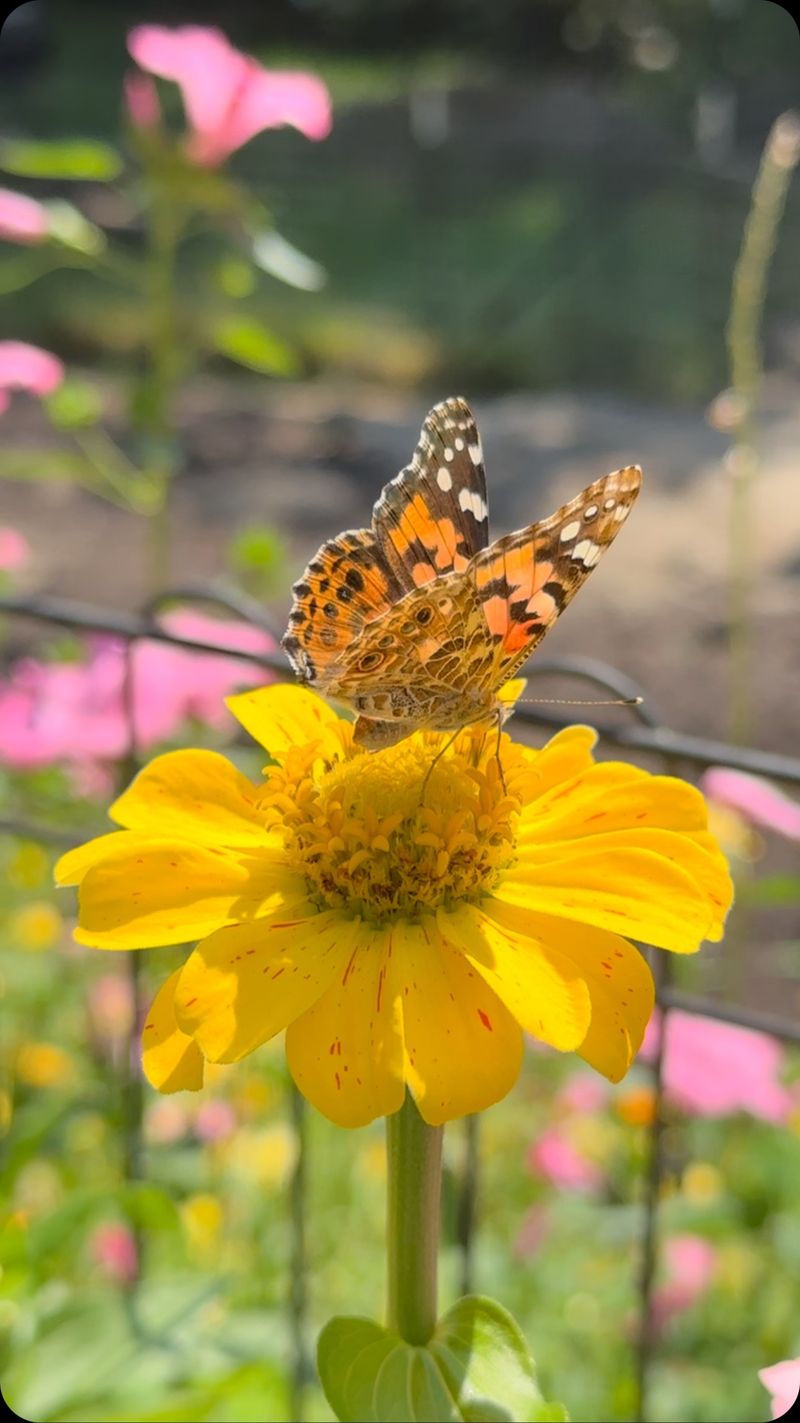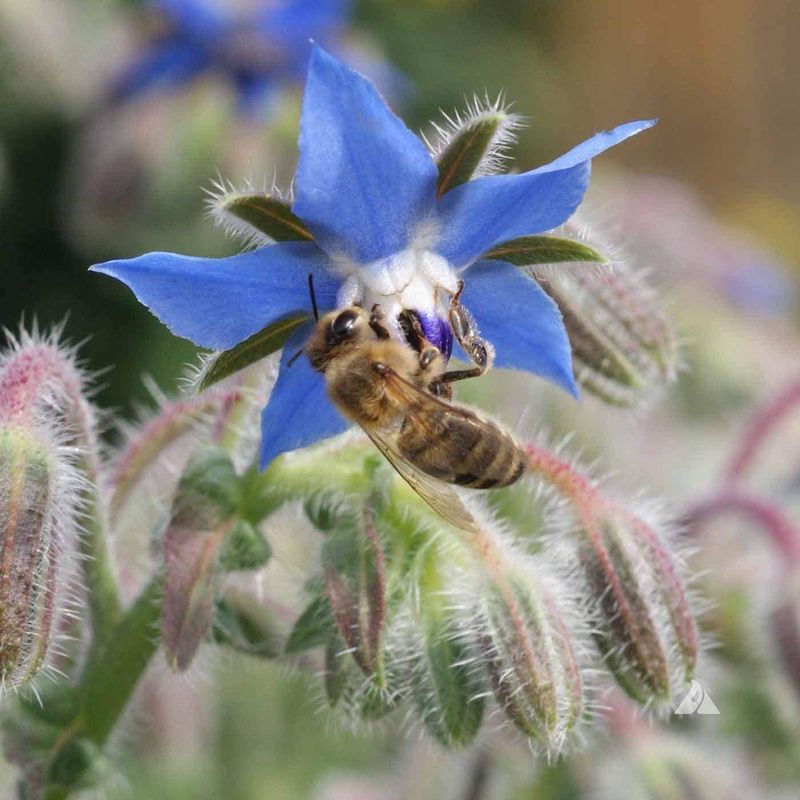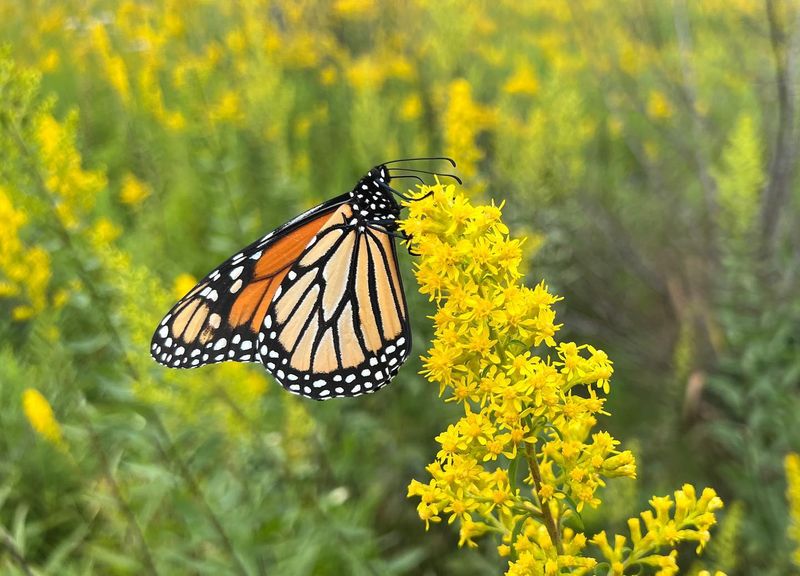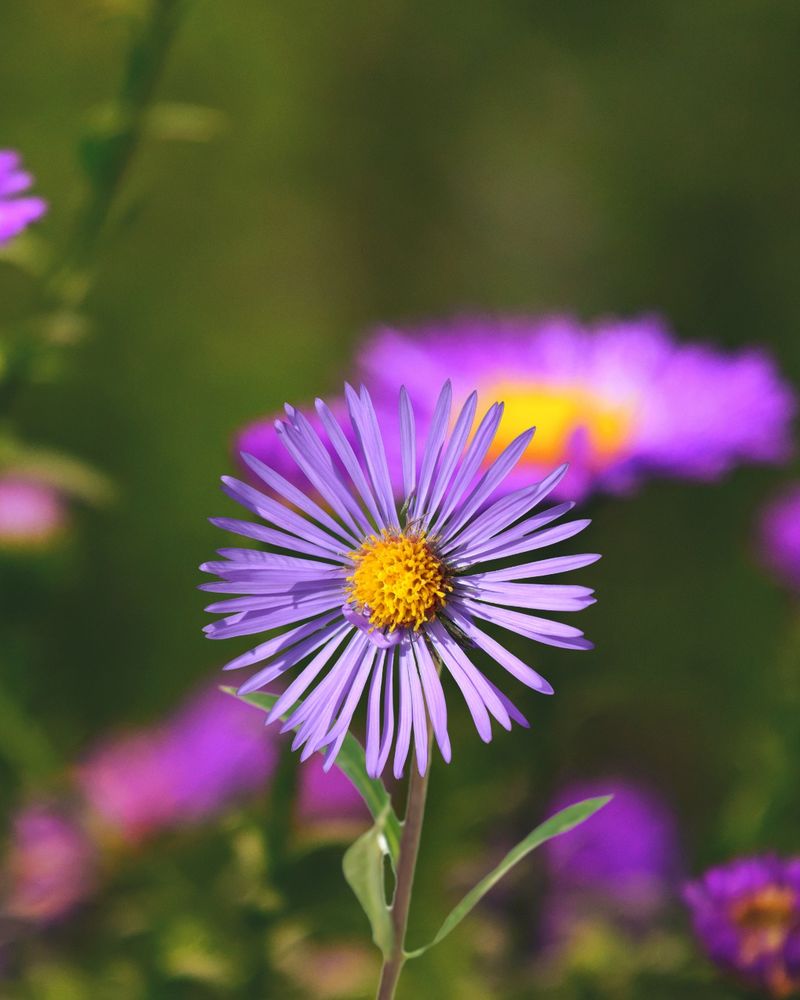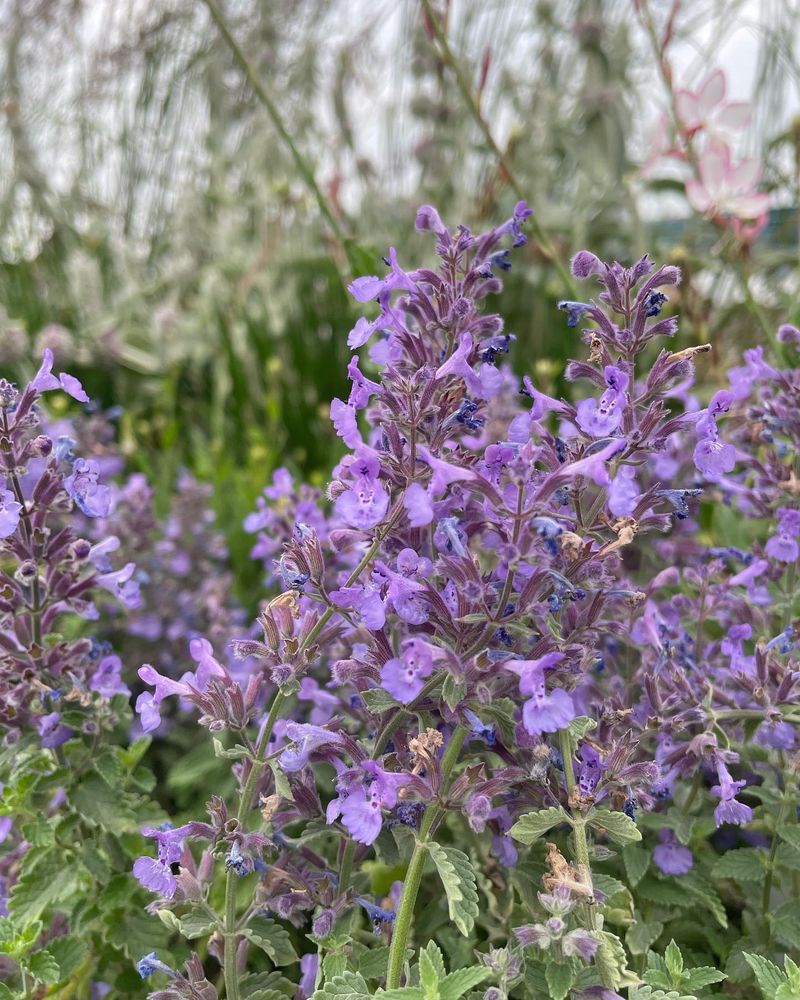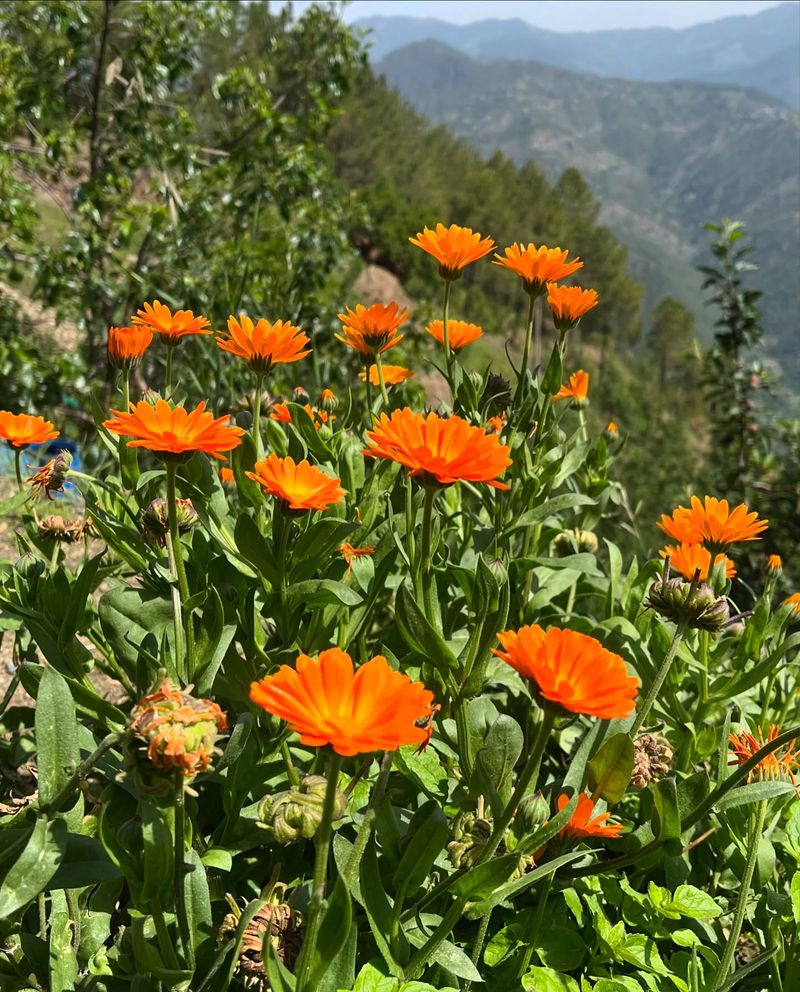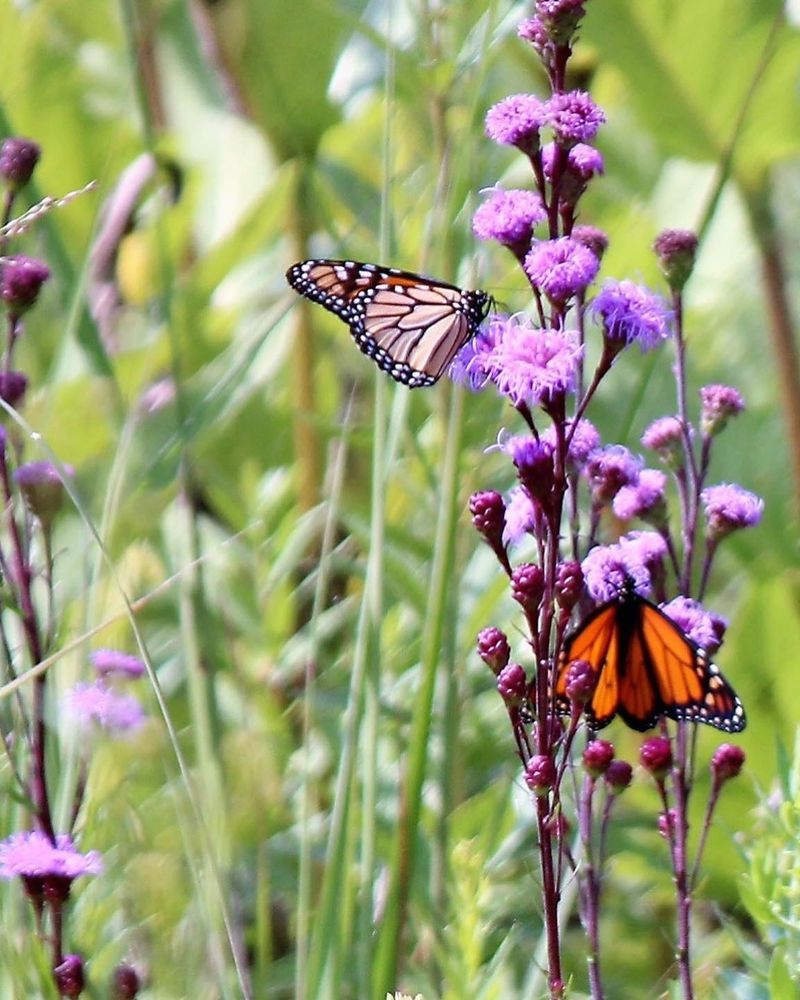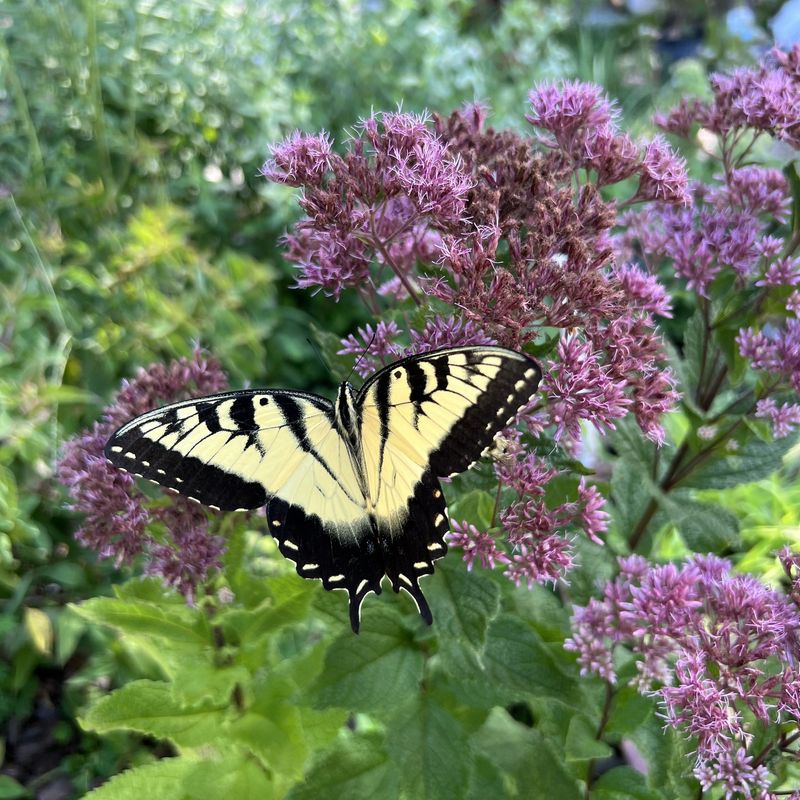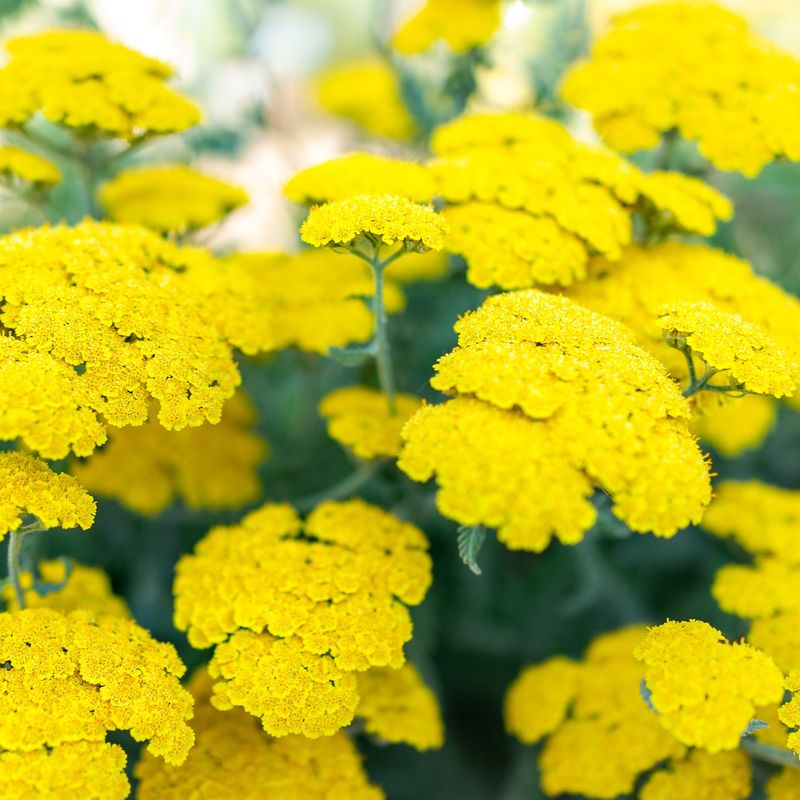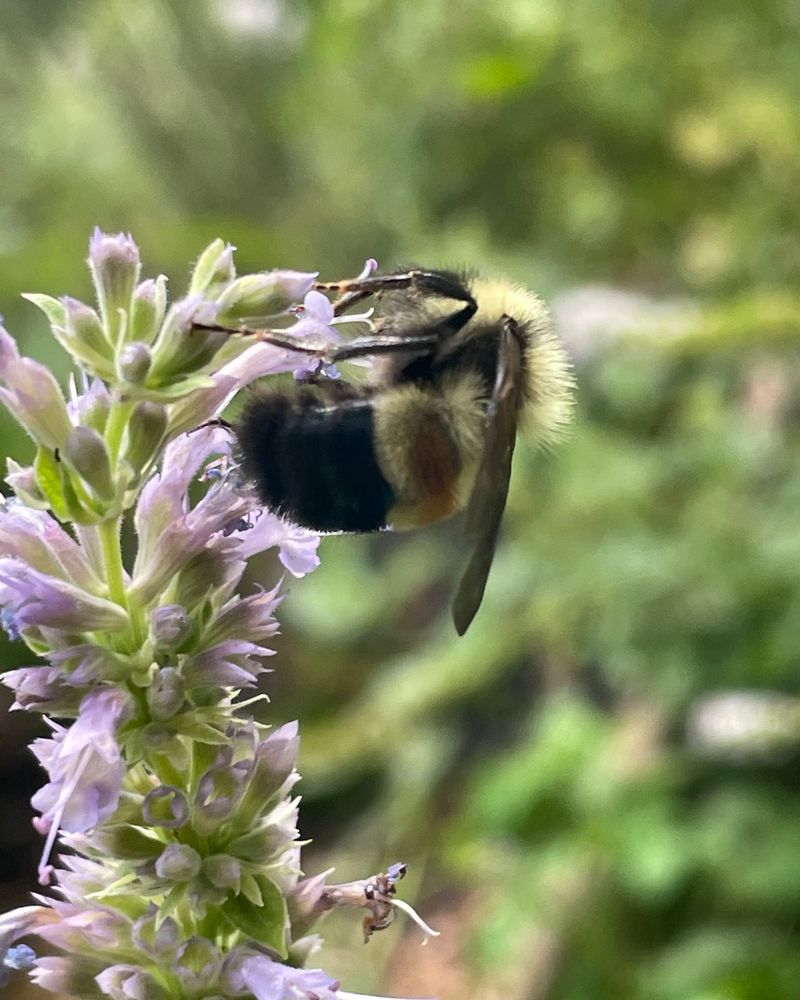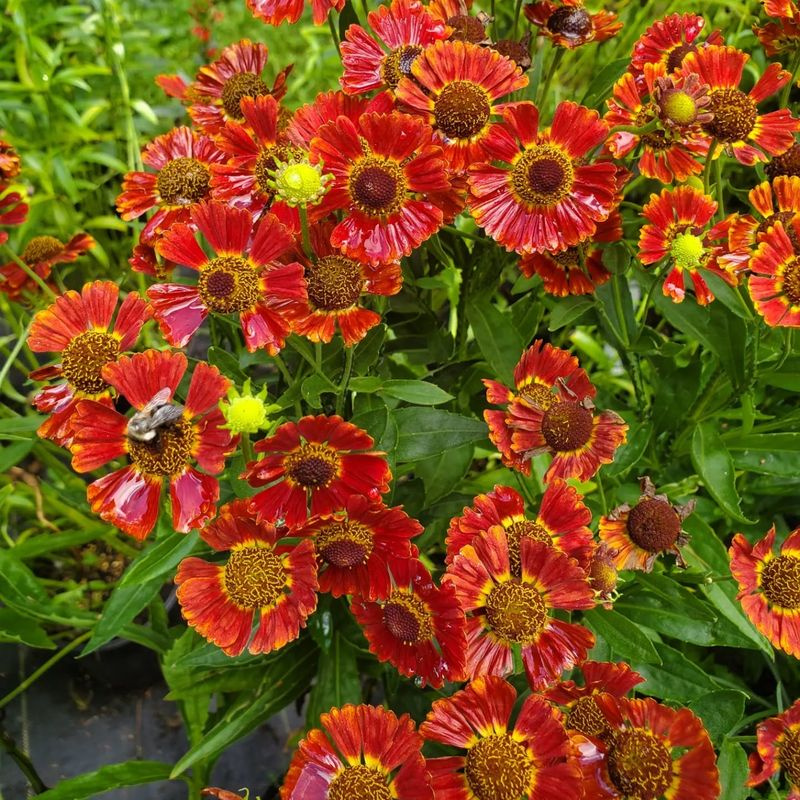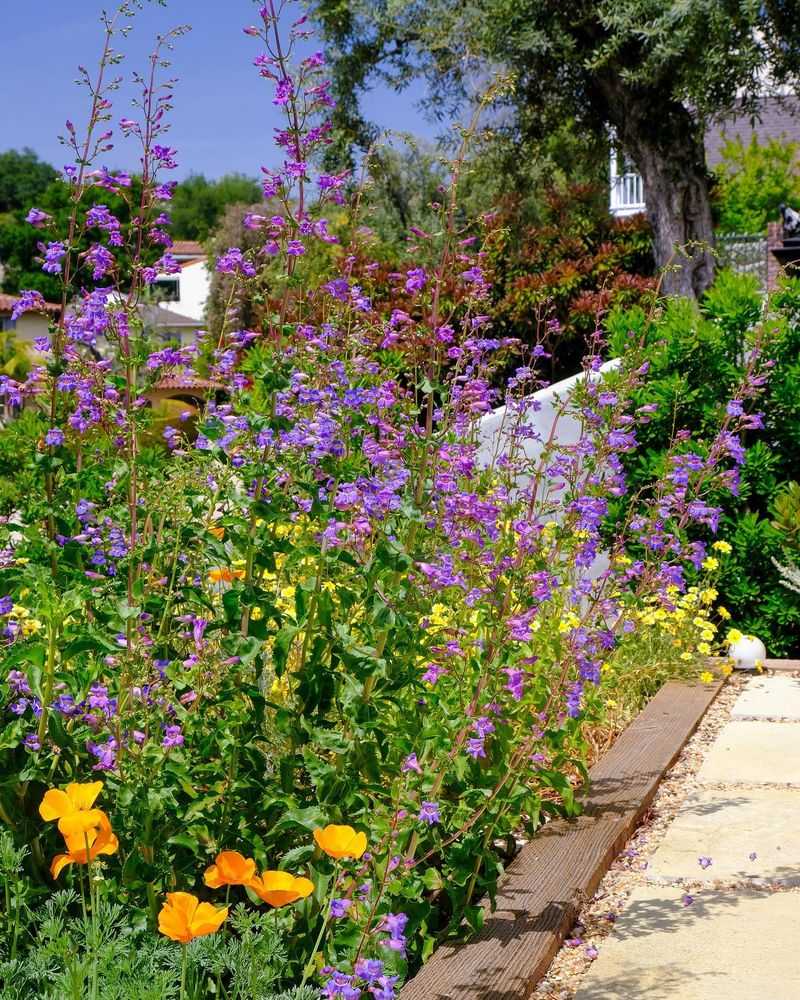Our gardens can become vibrant sanctuaries for bees, butterflies, and other essential pollinators that help plants reproduce. Planting flowers that attract these helpful creatures isn’t just beautiful—it’s vital for our ecosystem and food supply. By choosing the right blooming plants, you can create a backyard paradise that buzzes with life while helping these important creatures thrive.
1. Lavender: Purple Paradise for Pollinators
Lavender’s fragrant purple spikes aren’t just a treat for our senses—they’re a buffet for bees! The sweet nectar draws in countless pollinators during summer months.
Growing this Mediterranean native is simple in well-drained soil and full sunshine. Beyond its pollinator benefits, you’ll enjoy its calming scent and versatility in cooking and crafts.
Plant several varieties for a longer blooming season, providing nectar from spring through fall. Drought-tolerant once established, lavender delivers maximum pollinator appeal with minimal water needs.
2. Coneflower: Native Beauty with Purpose
Bees can’t resist the dome-shaped centers of coneflowers (Echinacea) where they gather both pollen and nectar. Their distinctive shape with drooping petals surrounding a prominent center creates a landing pad for butterflies too.
Hardy in zones 3-9, these native perennials return year after year with minimal fuss. The seed heads provide food for birds long after blooming ends, making them multi-season wildlife supporters.
Available in purple, white, yellow, and even green varieties, coneflowers blend beautifully in cottage gardens while serving as pollinator powerhouses from midsummer through fall.
3. Sunflowers: Cheerful Giants for Buzzing Friends
Standing tall against summer skies, sunflowers transform gardens into pollinator magnets with their massive flower heads. Bees absolutely adore the abundant pollen these giants produce.
From dwarf varieties perfect for containers to towering 12-foot specimens, there’s a sunflower for every garden space. Their quick growth from seed to bloom makes them perfect for gardening with kids.
Beyond attracting pollinators during flowering, sunflowers later provide nutritious seeds for birds and wildlife. Consider planting different varieties for continuous blooming from early summer through fall.
4. Milkweed: Monarch Butterfly Essential
Monarchs simply cannot survive without milkweed plants. Female butterflies lay eggs exclusively on these plants, and the caterpillars eat only milkweed leaves, which provide compounds that help protect them from predators.
Native milkweed varieties like butterfly weed (Asclepias tuberosa) produce stunning orange, pink, or yellow flower clusters that attract numerous pollinators. The nectar-rich blooms draw in bees, butterflies, and hummingbirds throughout summer.
Growing milkweed helps address the alarming decline in monarch populations by providing crucial habitat and food. Consider planting several patches to create a monarch waystation in your yard.
5. Bee Balm: A Pollinator Party Favorite
Resembling fireworks frozen in time, bee balm’s spiky, tubular flowers burst with color while buzzing with activity. Hummingbirds, butterflies, and bees flock to these nectar-rich blooms throughout summer.
Native to North America, these mint family members spread enthusiastically, filling gardens with their distinct fragrance and showy blossoms in red, purple, pink, or white. The aromatic leaves can be used for tea, adding another dimension of usefulness.
Plant bee balm in full sun to partial shade where its bold texture creates visual impact. Divide clumps every few years to maintain vigor and prevent overcrowding in your pollinator paradise.
6. Salvia: Long-Blooming Pollinator Magnet
Bumblebees perform a fascinating dance called ‘buzz pollination’ on salvia flowers, vibrating their bodies to release pollen. The tubular blooms in shades of purple, blue, red, or white seem tailor-made for pollinators.
Drought-tolerant and deer-resistant, salvias thrive where other plants struggle. Many varieties bloom from spring until frost with minimal deadheading, providing a consistent nectar source throughout growing seasons.
From compact varieties perfect for containers to tall, statement plants for backgrounds, salvias fit beautifully in any garden design. Their aromatic foliage deters many garden pests while attracting beneficial insects.
7. Zinnia: Easy Annual for Butterfly Buffets
Butterflies flock to zinnias’ flat landing pads and nectar-rich centers, creating living gardens that flutter with color. These annuals bloom prolifically from summer until fall frost, providing constant pollinator support.
Growing zinnias from seed directly in garden soil couldn’t be simpler—just press seeds into warm soil after frost danger passes. Cut flowers regularly to encourage more blooms and enjoy indoor bouquets that last for days.
Available in nearly every color except true blue, zinnias range from thumb-sized buttons to dinner-plate blooms. Their variety makes them perfect for children’s gardens, cutting gardens, and pollinator patches alike.
8. Borage: Blue Stars for Bees
Borage’s star-shaped blue flowers dangle like little bells, creating a heavenly sight that bees simply cannot resist. The plants produce abundant nectar, making them among the most bee-visited flowers in any garden.
Beyond attracting pollinators, borage offers edible flowers with a cucumber-like flavor perfect for salads, drinks, or as pretty garnishes. The leaves are also edible though slightly fuzzy in texture.
Self-seeding generously, borage establishes itself as a reliable garden presence year after year. Plant it near tomatoes and strawberries where it improves growth and flavor while bringing in beneficial insects to help with pollination.
9. Goldenrod: Fall Nectar Source
Golden plumes swaying in autumn breezes signal a critical feeding time for pollinators preparing for winter or migration. Contrary to popular belief, goldenrod doesn’t cause hay fever—that’s ragweed blooming at the same time!
Late-season blooms provide essential nutrition when many other flowers have faded. Butterflies, bees, and beneficial wasps gather around these yellow flowers in impressive numbers during September and October.
Native goldenrod varieties support over 100 butterfly and moth species. Choosing garden-friendly cultivars gives you the ecological benefits without the aggressive spreading of wild types.
10. Aster: Late-Season Pollinator Lifeline
Daisy-like asters burst into bloom just when most garden flowers are fading, providing crucial late-season nectar for pollinators. Their purple, pink, or white blooms create a final feast before winter.
Native varieties support specialized bees and butterflies that have evolved alongside these plants for millennia. The abundant small flowers on each plant create pollen-rich feeding stations that buzz with activity.
Plant asters where they’ll receive morning sun and afternoon shade for best performance. Their naturally compact growth creates perfect border plants that flower when the garden needs color most.
11. Catmint: Catnip’s More Refined Cousin
Masses of lavender-blue flower spikes emerge from silvery foliage, creating pollinator heaven from late spring through summer. Bumblebees especially love catmint, often visiting in such numbers that the plants seem to vibrate.
Hardy and drought-resistant once established, catmint (Nepeta) returns reliably year after year with minimal care. Trim back after the first flowering flush to encourage a second round of blooms later in summer.
Unlike its wilder cousin catnip, ornamental catmint varieties maintain a tidier habit perfect for garden borders. Plant near roses where its pest-repelling properties help protect its more demanding neighbors.
12. Calendula: Edible Flowers for People and Pollinators
Sunny orange and yellow blooms make calendula (pot marigold) a cheerful addition to both vegetable and flower gardens. Bees and butterflies appreciate the abundant pollen these daisy-like flowers provide from spring through fall.
Easily grown from seed, calendula often self-sows gently, returning year after year without becoming invasive. The edible petals add color to salads and have been used for centuries in herbal preparations for skin health.
Cool-season bloomers, calendulas perform best in spring and fall in hot climates, making them perfect companions for vegetable gardens where they attract pollinators to fruit and vegetable flowers.
13. Liatris: Vertical Interest for Butterflies
Purple blazing star (Liatris) sends up tall spikes of fluffy purple flowers that butterflies find irresistible. Unlike most flowers that bloom from the bottom up, liatris blooms from the top down, creating extended feeding periods for pollinators.
Native to North American prairies, these drought-tolerant perennials thrive in full sun and poor soil. Their deep taproots help them survive challenging conditions while providing stability that prevents flopping.
The distinctive vertical form adds architectural interest to garden designs while serving as butterfly magnets. Plant in groups of odd numbers for the most natural-looking display in meadow gardens or perennial borders.
14. Joe-Pye Weed: Butterfly Skyscraper
Towering up to seven feet tall, Joe-Pye weed creates a majestic presence crowned with dome-shaped clusters of tiny pink-purple flowers. Butterflies flock to these massive blooms, sometimes covering the plants during peak summer flowering.
Native to eastern North America, this impressive perennial naturally grows in moist areas but adapts to average garden conditions. Newer cultivars offer more compact forms for smaller spaces while maintaining pollinator appeal.
Despite its unfortunate common name, this plant isn’t a weed but a valuable native with impressive ecological benefits. The hollow stems provide winter homes for beneficial insects after the growing season ends.
15. Yarrow: Drought-Tolerant Pollinator Haven
Flat-topped flower clusters create perfect landing pads for small beneficial insects and butterflies. Available in yellow, white, pink, or red, yarrow’s ferny foliage and long-lasting blooms make it both ornamental and ecological.
Ancient herb with modern appeal, yarrow thrives in poor soil and dry conditions where other plants struggle. Its ability to withstand foot traffic makes it suitable for pathways and meadow gardens where its sturdy stems stand up to summer storms.
Beyond attracting pollinators, yarrow flowers attract predatory insects that help control garden pests naturally. The dried flower heads provide winter interest and seed for birds in naturalistic garden designs.
16. Anise Hyssop: Licorice-Scented Bee Magnet
Honeybees hover constantly around anise hyssop’s purple flower spikes, gathering nectar that produces distinctively flavored honey. The licorice-scented leaves add sensory appeal for gardeners while the upright flower spikes provide weeks of pollinator feeding.
Member of the mint family but better behaved in gardens, anise hyssop grows in tidy clumps rather than spreading aggressively. Both leaves and flowers are edible, adding licorice flavor to teas and desserts.
Drought-tolerant once established, these native perennials bloom from midsummer into fall. Their architectural form and purple-blue color make them standout performers in both ornamental and pollinator-focused gardens.
17. Sedum: Succulent Feast for Fall Pollinators
Sedums transform into pollinator magnets in late summer when their flat flower clusters turn from green to pink to rusty red. Butterflies, bees, and beneficial wasps gather on these sturdy plants when many other garden flowers have faded.
Drought-tolerant succulents with fleshy leaves, sedums survive neglect that would kill less rugged plants. Their shallow root systems make them perfect for rock gardens, green roofs, and containers.
Winter interest extends their garden value as the dried flower heads stand above snow, providing architectural elements and seed for birds. Cut stems last for weeks in arrangements, bringing pollinator habitat indoors.
18. Helenium: Sneezeweed for Happy Pollinators
Despite its unfortunate common name, Helenium won’t make you sneeze but will make pollinators very happy! The daisy-like flowers with distinctive raised centers bloom in rich autumn hues of gold, orange, and mahogany.
Late summer and fall blooming makes helenium especially valuable when pollinator food sources diminish. Butterflies and native bees gather around these colorful native perennials during crucial pre-migration and pre-winter feeding times.
Growing 2-5 feet tall depending on variety, these sturdy plants create middle or back-of-border interest. Deadheading spent flowers encourages continued blooming through the autumn season.
19. Penstemon: Tubular Flowers for Specialized Pollinators
Hummingbirds dive straight for penstemon’s tubular blooms, perfectly shaped for their long beaks and tongues. Native bees with specialized long tongues also visit these colorful perennials that bloom in shades from white to purple to red.
Adapted to various challenging conditions, different penstemon species thrive in settings from hot, dry slopes to woodland edges. Their semi-evergreen foliage provides garden structure even when not in bloom.
North American natives, penstemons evolved alongside our continent’s pollinators, making them especially valuable for ecological gardening. Choose species native to your region for best adaptation to local conditions and maximum wildlife value.


